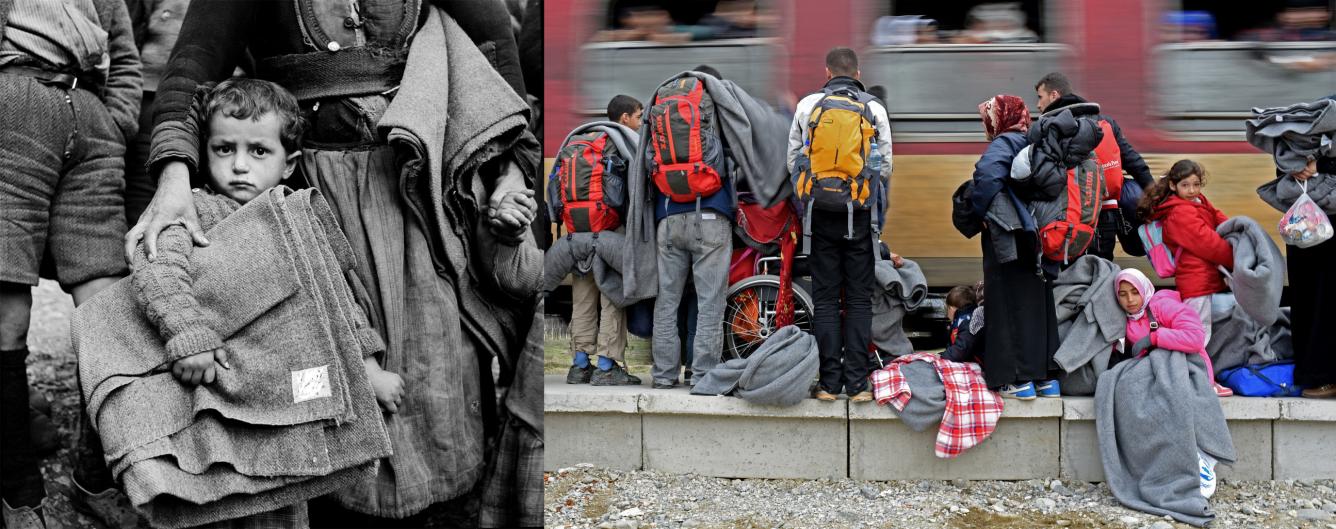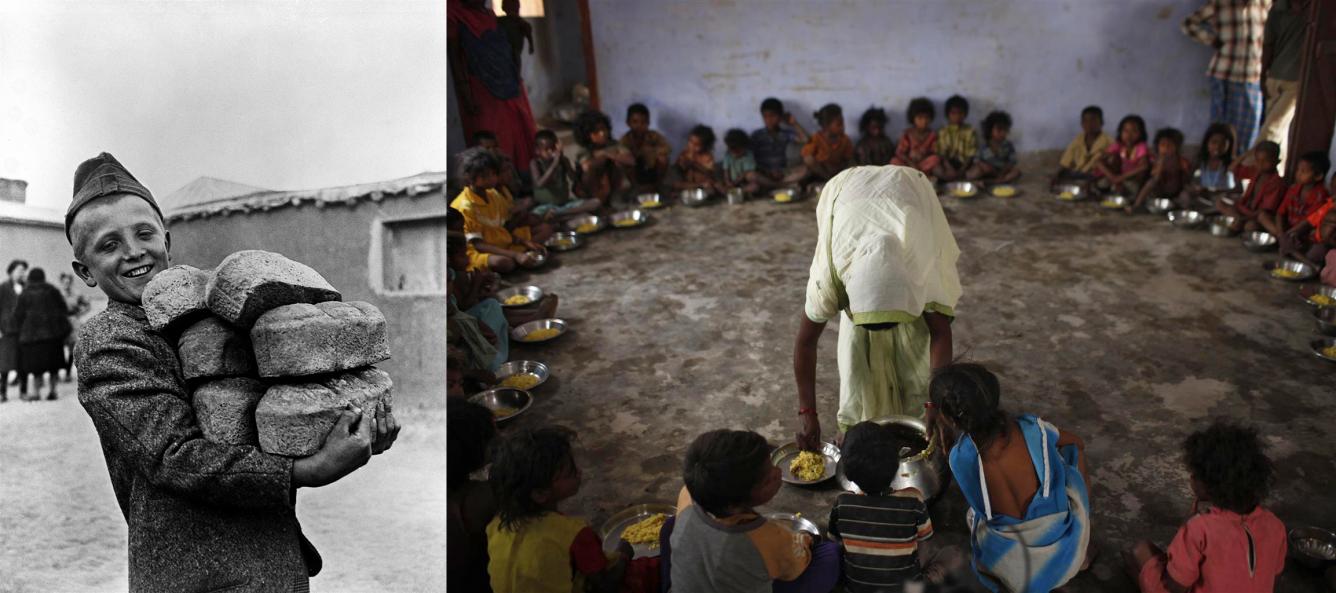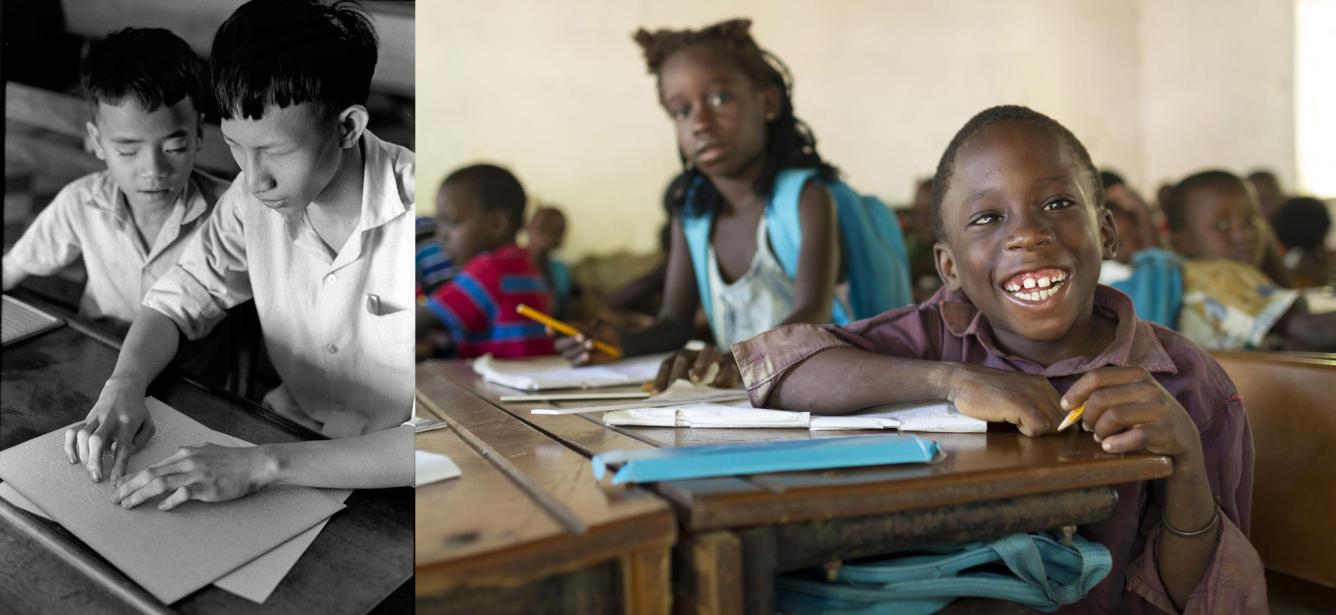For every child, hope
Seventy years ago UNICEF was founded to bring lifesaving aid, long-term support, and hope to children whose lives and futures are put at risk by conflict, by crises, by crushing poverty, and, increasingly, by the effects of climate change. UNICEF’s work for the most disadvantaged, excluded, and vulnerable children has never been more relevant, nor more urgent.
(Left) Circa 1950, in the north-western town of Castoria, Greece, a boy holds a blanket, clutching the skirt of a woman. (Right) In the Former Yugoslav Republic of Macedonia, refugees stand on the train platform outside Vinojug transit centre, on their way to western and northern Europe.
(Left) In 1060 in Mexico,, three-year-old Concepcion Uribe wears leg braces to support her polio-weakened limbs outside a rural health centre. (Right) In 1991 in Sudan, a baby receives a dose of oral polio vaccine in a children's clinic in Khartoum.
(Left) In 1960 in Ghana, a midwife weighs a child on a scale in a comprehensive long term rural health plan emphasising training of medical personnel in Tuma. (Right) in 2014, a woman cradles her preterm baby using ‘kangaroo care’ against her skin to keep warm, in Tanzania.
(Left) Circa 1949 in India, a health worker vaccinates a boy against tuberculosis in the town of Faridabad, near Delhi. (Right) In 2010, a health worker vaccinates a boy in a camp for people displaced by flooding, in Sukkur, Sindh Province.
(Left) In 1946 in Poland, a smiling boy carries six loaves of bread. In 2009, malnourished children receive a meal of rice and dal in Sullineabad Village where basic health education, nutrition services are provided at the village level for children and women in impoverished areas.
(Left) Circa 1946 in Greece, a severely malnourished boy is fed with a spoon. (Right) In 2009, a woman embraces her severely malnourished child at a nutritional rehabilitation centre in Niger.
(Left) Circa 1950, approximate locale Guatemala, five-year-old Norma Salandia's mouth and nose are covered with foamy milk, after drinking from her cup. (Left) In 2015, a girl eats food prepared by ‘cadres’ who play an important role in Indonesia’s health system.
(Left) In 1946 in Yugoslavia, three boys share a desk in a school in the city of Karlovac in the north-western region of Croatia. (Right) In 1983 in Pakistan, girls share books and a bench after class in their school in the city of Karachi.
(Left) In 1946 in Germany, children - most of who lost parents in concentration camps - perform a folk dance at an army telecommunications camp. (Right) In 2006, children play during recess at a school in one of the poorest districts in Zambezia Province in Mozambique.
(Left) In 2000 in Afghanistan, boys collect water at a handpump on the outskirts of the town of Laghman. (Right) In 2012, a School Brigade member demonstrates proper hand washing techniques during assembly in Bangladesh.
(Left) In 1947 in Egypt, boys are cheered on during the long-jump event of a sports competition at a refugee camp. Eighteen months before, these children were at war. (Right) In 2012, boys displaced by inter-ethnic violence play volleyball, outside a child-friendly space, in South Sudan.
(Left) In 1972 in South Viet-Nam, two boys who are blind read Braille. Despite the difficulty of the war, special schools have been set up. (Right) In 2014, Usher, 7, who has a physical disability, a first grade student in Guinea Bissau, learns as an equal alongside his peers.
(Left) Circa 1946 in Egypt, children look at the Serbo-Croatian words 'nasa skola' (our school) written in the sand in a refugee camp. (Right) In 2014 in Italy, adolescents spell the word ‘costruire’ (to build), chosen to reflect the need to build a new generation with better values.













